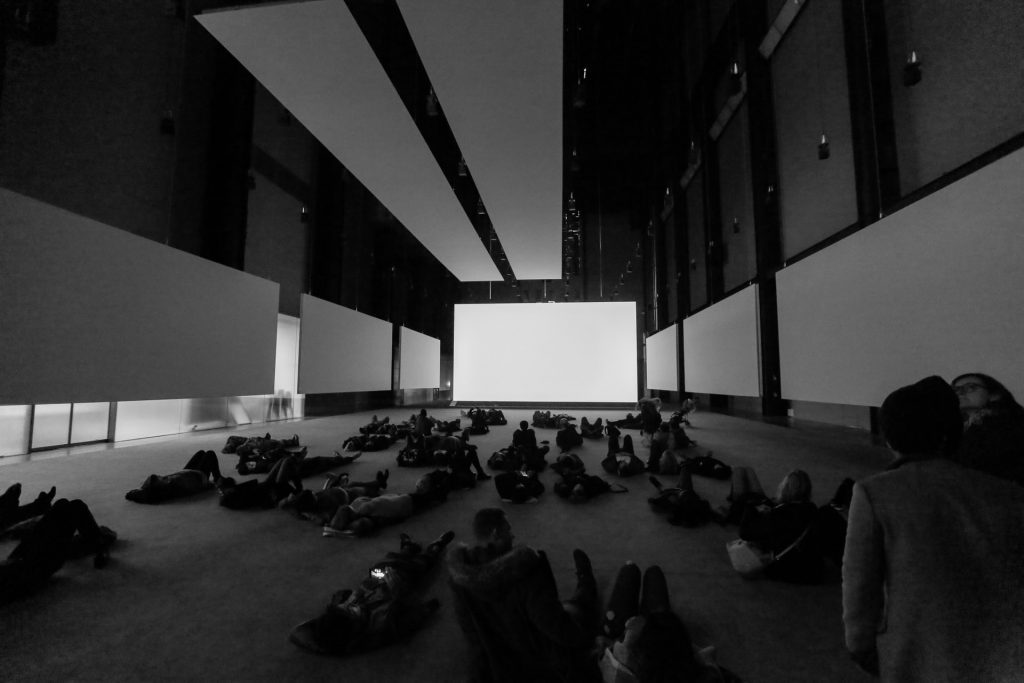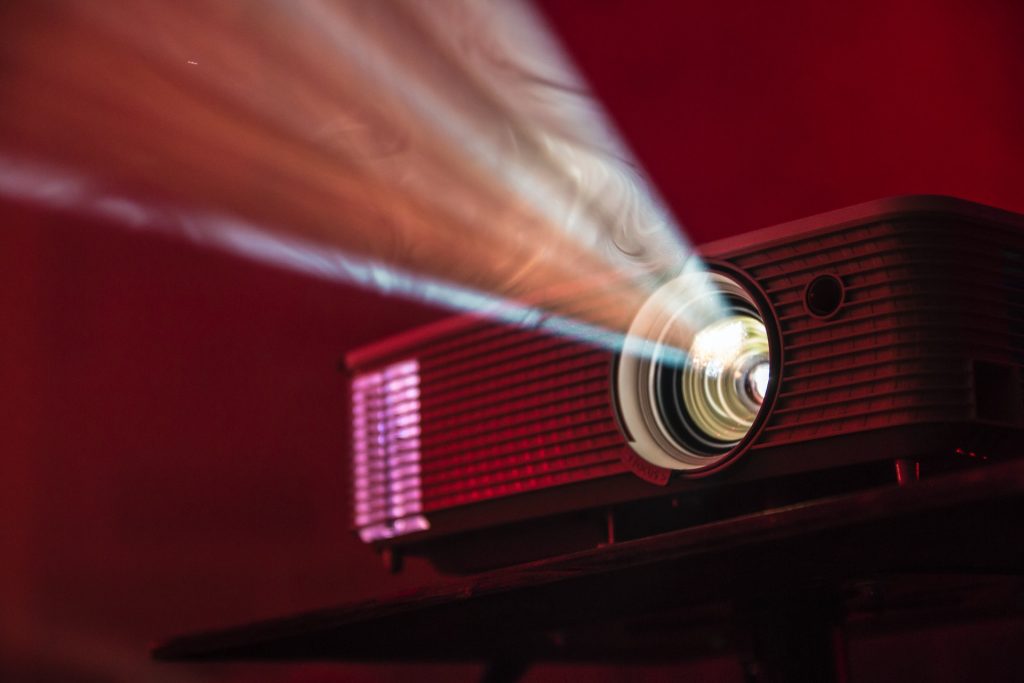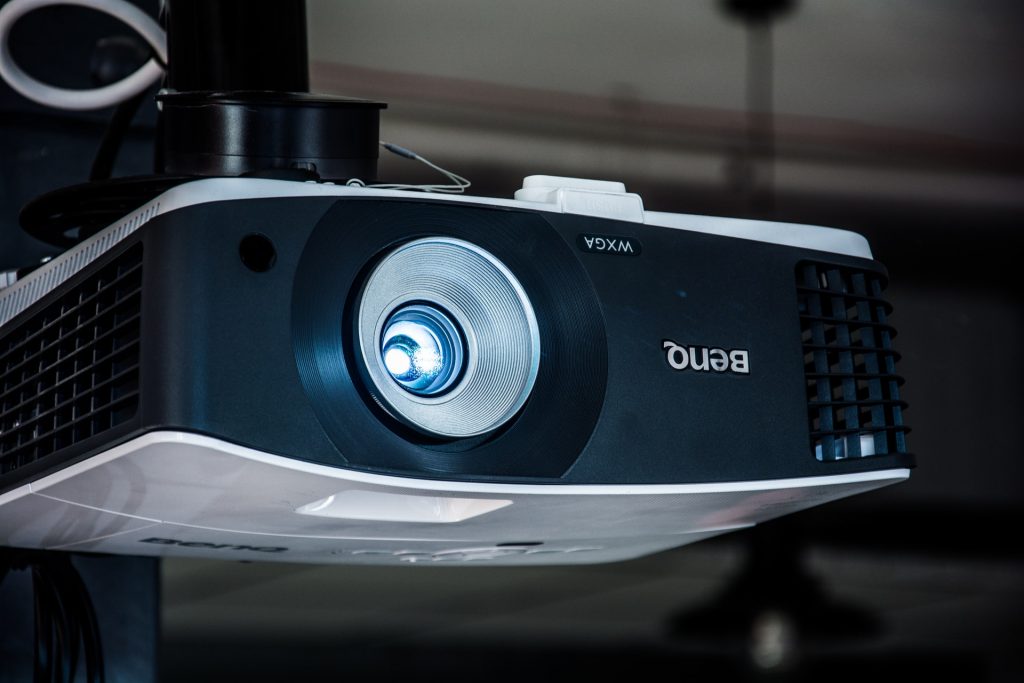Different types of projector screens could help you enjoy your entertainment. Using projector screens is way better than projecting images over a white wall. However, selecting the ideal type of projector screen that pairs perfectly with your projector matters.
There are different types of projector screens today. You can categorize them based on their types and, by extension, how you mount them. This article takes a detailed look at the different types of projector screens.
You’ll learn the following by reading this article:
- Different types of projector screens
- Best projector screens for movies
- Pros and cons of each type of projector screen
Let’s get started!
Types of Projector Screens
All types of projector screens have one task at the end of the day – to project crisp and clear images from your projector. There are two basic types of projector screens;
- Fixed screens
- Portable screens
Let’s take a deeper look at these two types of screens.
Fixed Projector Screens
Fixed projector screens are not mobile. Moving them is challenging – it’ll require a lot of work. There are four primary types of fixed projector screens according to their screen type and features. Check them out:
1. Outdoor Projector Screens
Imagine watching your favorite childhood movie outdoors at night with your family during a reunion. The video projection is so clear and life-sized. You can achieve this level of enjoyment by pairing your projector with the correct outdoor projector screen.
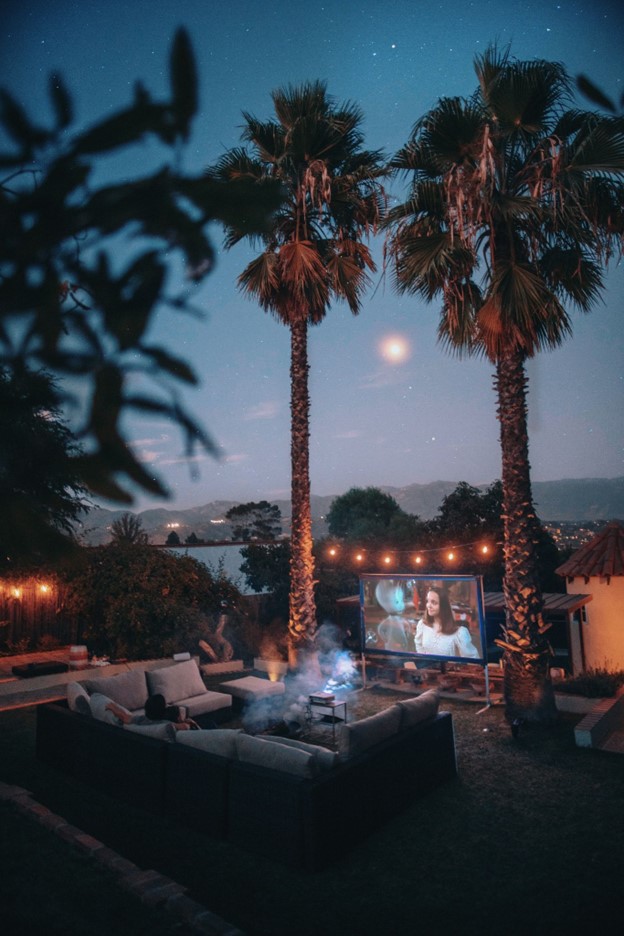
It would be best to acquire a sturdy outdoor projector screen that can withstand anything from light winds to the blistering sun. The outdoor projector should also have a frame around so that it becomes easier for you to frame your image according to your projector’s recommended size.
It is also essential to put the screen’s color into consideration. Excessive ambient light can ruin the clarity of your projected image – it’ll make your pictures look washed out. Consider getting a gray outdoor screen if there is a lot of ambient light from your neighbor’s lights, street lights, passing vehicles, or even natural light from the moon.
A white screen will do just fine if there is little to no ambient light.
Qualities of a Good Outdoor Projector Screen
An excellent outdoor projector screen should have the following qualities:
- Stability – it should be able to withstand the harshness of mother nature.
- Tensioning – ensures that the screen is wrinkle-free for the best movie experience (clear images).
Pros
Cons
2. Electric Projector Screens
You’ve probably seen how a garage door opens and closes – that’s how an electric projector screen functions. It is an immobile screen that operates electronically by folding up or unfolding down mechanically by pressing a button. Most electric screens are mounted on walls or ceilings.
Electric projector screens are ideal for both movie viewing and presentations. Their sleek design makes them have a level of professionalism. You can acquire either a tensioned or a non-tensioned electric screen.
Pros
Cons
Qualities of a Good Electric Screen
- Texture – the smoother the surface, the clearer the image projection you’ll have (1080p or 4K).
- Color – black or gray screens are ideal for rooms with a lot of ambient lighting. You can, however, use a white screen if it is possible to control your room’s ambient light.
3. Manual Pull-Down Projector Screen
Manual pull-down projector screens have a similar working design to motorized screens. The only difference is that one is manual and another one is motorized. A manual projector screen will function almost the same way as the electric screen when reflecting images.
Using the manual screen, you can present your ideas to your colleagues at work. You can also use the manual projector screen as a movie screen.
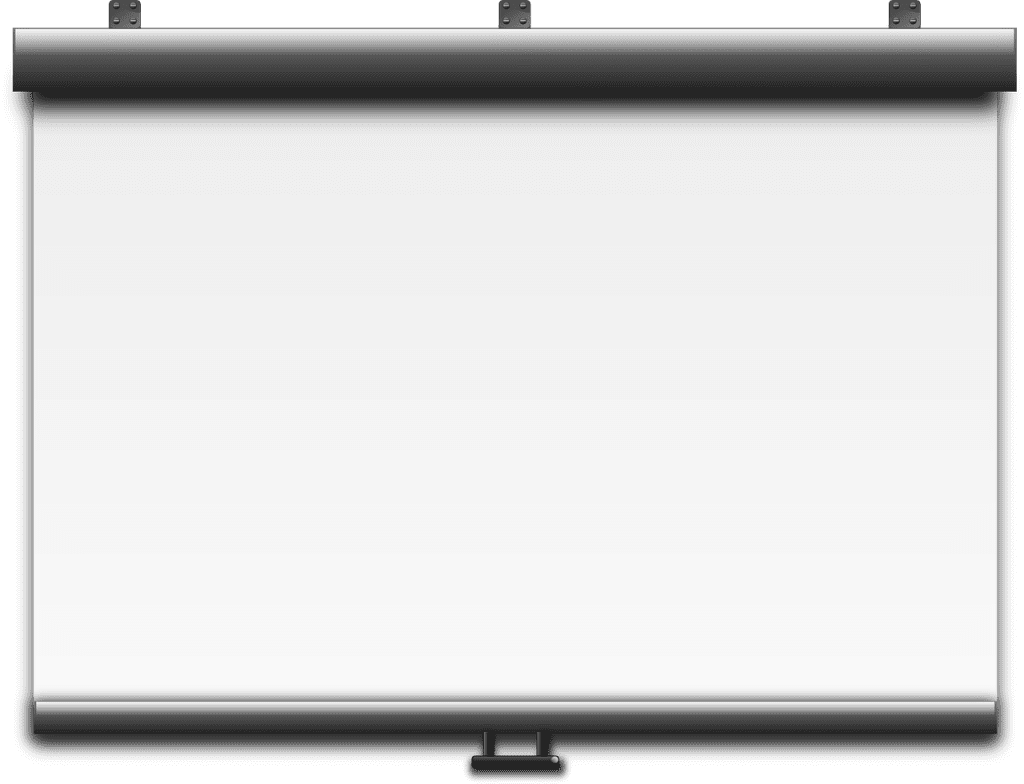
Qualities of a Good Manual Pull-Down Projector Screen
- Texture – smoother texture = clearer images (1080p & 4K reflection)
- Color – darker colors (black and gray) are ideal for rooms with a lot of ambient light. White screens are ideal for rooms with ambient light control.
Pros
Cons
4. Fixed-Frame Projector Screen
A fixed-frame projector screen is immobile (like the manual or electric projector screen). They are primarily used in movie theaters and conference rooms.
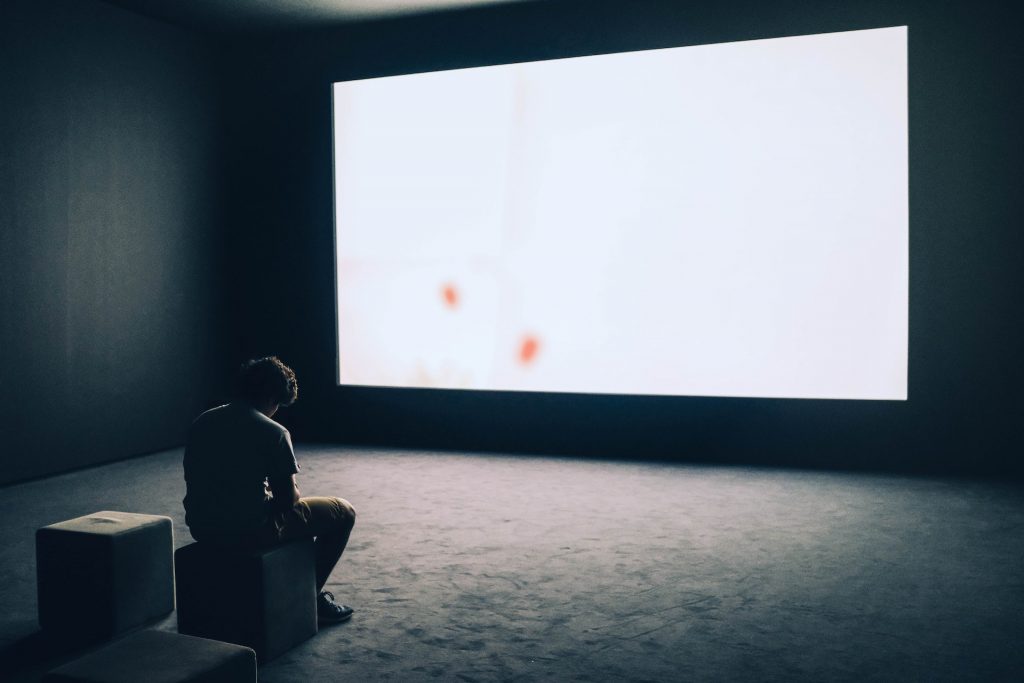
The fixed-frame projector screen is an ideal movie screen that can be set up in your home theater room.
Pros
Cons
Portable Projector Screens (Mobile)
Portable projector screens allow you to enjoy crisp, clear, and life-sized images wherever you go. Mobile screens can indeed be as big as 40”. They are lightweight and durable; some can even function outdoors.
There are four primary types of portable projector screens. Check them out:
1. Tripod Projector Screen
You can use a tripod projector screen almost anywhere – in a classroom, living room, or even outdoors. It can withstand any environment, as the tripod stand has a sturdy build. However, some tripod stands may not be strong enough to withstand the outdoor environment.
The best part about using a tripod stand projector is that you can fold it up and store it. It is possible to use the tripod projector screen even on uneven surfaces. There are different sizes of tripod projector screens. It would be best to select one that matches your projector’s recommended image size.
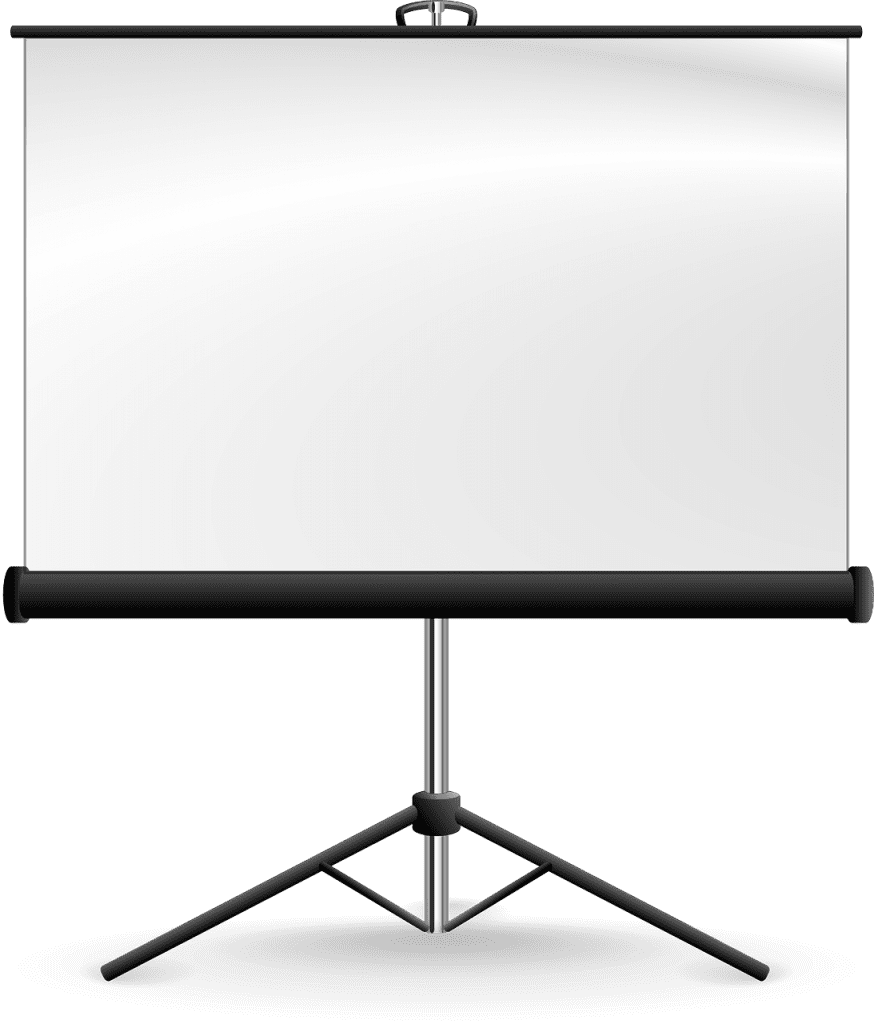
Pros
Cons
2. Pull-Up Projector Screen
A pull-up projector screen is the opposite of a pull-down screen. Pull-up screens rise from the floor and can be hidden when not in use.
The best part about using pull-up screens is that they save a lot of space. You can hide it behind your media center and pull it up whenever you want to enjoy watching a good movie with life-sized images.
Most pull-up projector screens are easy to set up – they do not have an electric motor. However, you can still get electric pull-up projector screens. It is important to note that most pull-up projector screens are non-tensioned.
Therefore, if your projector screen is not tensioned, it will not reflect the best image.
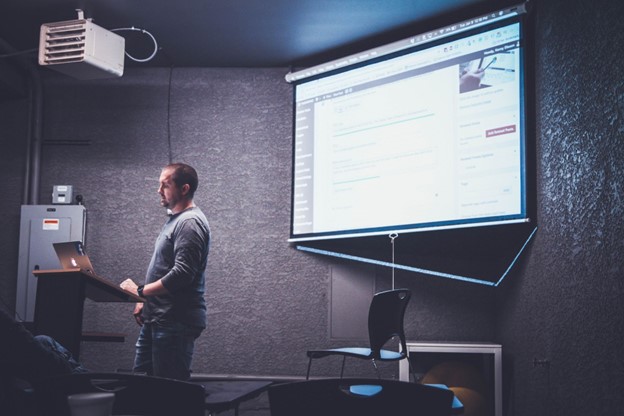
Pros
Cons
3. Tabletop Projector Screens
Tabletop projector screens are the lightest screens. They offer a practical solution concerning portability and are used with micro projectors. The screens are small (maximum width 1m) and fold sideways.
Tabletop projector screens are mounted on the top of tables, similar to what painters do with their canvases. This type of projector screen is portable, meaning you can carry it almost everywhere.
You can also use it as a small movie screen or presentation screen.
Pros
Cons
4. Mobile Expert Folding Screen
Unlike the tabletop projector screen, a mobile expert folding screen is ideal for large-scale projections. A two-legged robust aluminum frame supports the projector screen. Its screen is wide because it can support projections as wide as 4m. Its height is adjustable.
By changing the fabric, you can also use a rear projector with this folding screen.
Pros
Cons
Final Thoughts
Using projector screens to project images can help you enjoy your entertainment or presentation by projecting clear life-sized images. Using a screen is far better than projecting images over a white wall.
There are two basic types of projector screens:
- Fixed screens (non-portable)
- Portable screens (mobile)
There are four primary types of fixed screens. Check them out:
- Outdoor projector screens (there are also portable outdoor projector screens)
- Electric screens – reflects superior image quality
- Manual pull-down screens (works just like the electric screen, only that it is operated manually)
- Fixed-frame projector screen (popularly used because of their durability and cost-effectiveness.
There are, yet again, four primary types of portable projector screens. Check them out:
- Tripod projector screen – can be used almost anywhere – indoors and outdoors. In addition to that, it can withstand uneven environments.
- Pull-up screen – unlike the electric and pull-down screens, the pull-up screen rises from the floor upwards. It can be used to save a lot of space because you can retract it when it is not in use.
- Tabletop screen – One of the lightest and most practical portable projector screens. You can easily mount it on top of a table for a small audience to view since it is 1m wide.
- A mobile expert folding screen can be used for larger audiences as it is 4m wide. It is possible to interchange this screen’s fabric to fit both front and rear projectors.
Here’s the deal:
When selecting the ideal type of projector screen to use, consider selecting the one that best suits your needs. Each type of projector screen has its pros and cons. What matters the most is settling with a screen whose pros benefit you.
For example, if you want to travel with your projector screen, going for the tabletop screen or mobile expert folding screen will be better than selecting a fixed-frame projector screen.

